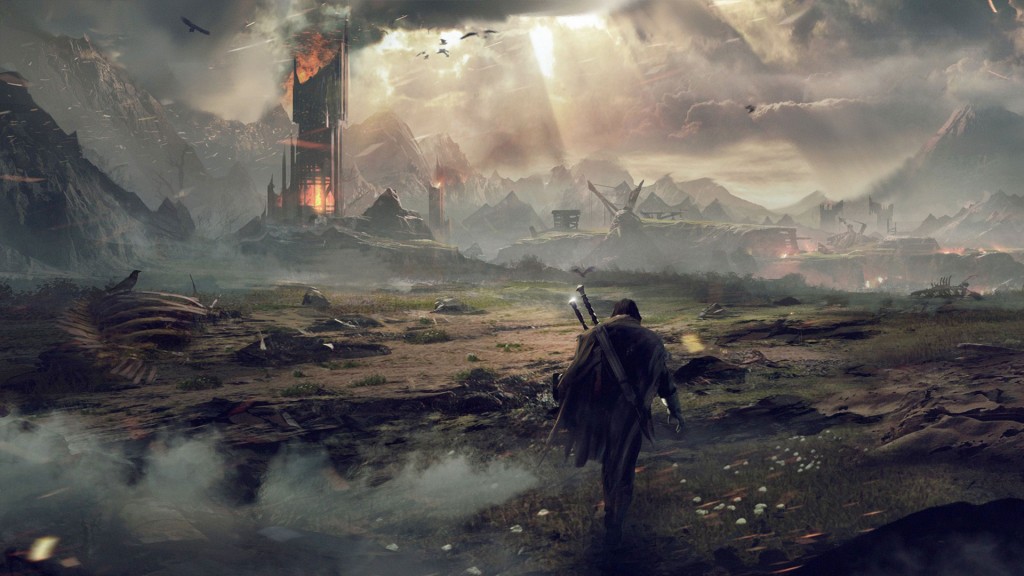
In “Middle-earth: Shadow of Mordor,” you’ll play as Talion, a human ranger from the Black Gate, in an exhilarating quest for revenge. Along the way, you’ll make allies among freed human slaves and slay hordes of Uruk-hai (“Orc folk”), working your way up the chain of command of the Dark Lord Sauron’s army in order to reach the Black Hand — the man who cursed you with the inability to die and killed your wife and son. Joining you is an elderly elfish Ringwraith, who’s forgotten his name and story. Together, you’ll weaken Sauron’s army, uncover lost secrets behind the Wraith’s identity and ultimately try to remove the curse that has left you immortal.
So yeah, there’s a lot going on. But you don’t have to be a Tolkien scholar to enjoy the story.
“Shadow of Mordor,” produced by Warner Bros., is a precious title amidst an otherwise dry gaming season. Set in the 60-year period between the events of J.R.R. Tolkien’s “The Hobbit” and “The Lord of the Rings,” “Shadow of Mordor” presents an original story that exists in addition to the larger saga. The goals of Talion and Co. are smaller in scope than those of Bilbo and Frodo Baggins, which adds to the accessibility of the game and its story. However, the game’s many Easter eggs are more satisfying to players who are familiar with Tolkien’s Middle-earth.
For anyone who has played “Assassin’s Creed,” the game will feel very familiar to the touch. A large part of the gameplay involves sneaking around Uruk camps and killing your enemies quickly and quietly. The game’s combat follows the conventional hit-counter mechanic that shares a likeness with the “Arkham” series, but the complexity of the finishers, as well as other combat move sets, grants each combat encounter a satisfying, cinematic feel. It’s very hard to grow bored when you can decapitate an Uruk in so many different ways.
The different Wraith powers, as well as the abilities and weapon upgrades you can unlock, also add a different dynamic to combat. When fleeing from the pursuit of enemies, you can enter the Wraith world, which makes you much harder — though not impossible — to detect.
While “Shadow of Mordor” follows a fixed story, it’s not a linear-action game. The world is open for you to explore and, while it won’t take you too long to traverse the map, the game does an excellent job at making smaller areas feel expansive. Each section of the map harbors a “Forge Tower” which acts like an “Assassin’s Creed” viewpoint and serves as the point of respawning, or fast travel. Each half of the game takes place on a different map, which further mixes up the environment and makes the game feel that much larger.
The “bosses” of the game — the Uruk chiefs — are all randomly generated, and they all have random names, appearances, attributes and combat styles. The game utilizes a Nemesis system, which further personalizes combat. When you fail to defeat a chief, they’ll remember the battle, reminding you of your past weaknesses in future encounters. In some cases, they’ll even come back with war wounds from previous encounters, like burns and eye-patches. Killed chiefs also drop runes, which can be affixed to your sword, dagger and bow to give them unique powers. While you can’t change your weapons or armor, this is a decent compromise when it comes to character customization.
What sets the gameplay of “Shadow of Mordor” apart from other third-person RPGs is that you feel the penalties of dying at the hands of your enemy. Dying at the hands of the average grunt will increase his power, making him eligible for promotion to chief. Furthermore, when you die, this gives the whole army a chance to recuperate and grow in power. Dying to a chief only makes him harder to kill later on. The chiefs walk the open world freely, meaning that you’ll always be running into some tough foe regardless if you’re in the middle of a mission. While this might be annoying to some, it’s refreshing to have a game that rewards you for playing well and punishes you for playing poorly.
“Middle-earth: The Shadow of Mordor” has an interesting and engaging original story, and uses a tried-and-true-entertaining gameplay style. It’s a worthwhile purchase, lasting 30 to 40 hours of playtime, and is an excellent addition to any gaming library. It’s now available for PS3, PS4, Xbox 360, Xbox One and Microsoft Windows.


